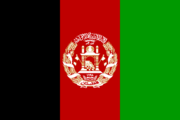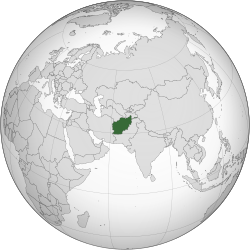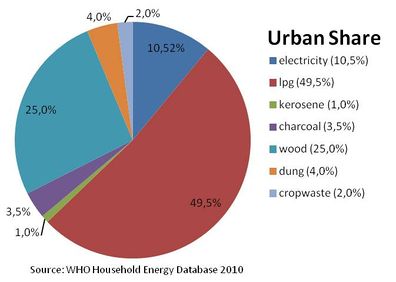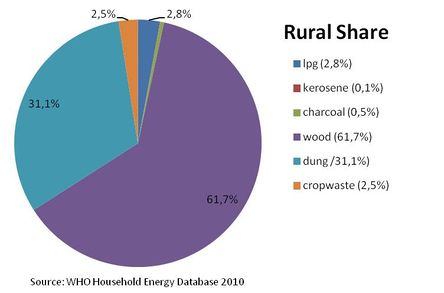Knowledge fuels change - Support energypedia!
For over 10 years, energypedia has been connecting energy experts around the world — helping them share knowledge, learn from each other, and accelerate the global energy transition.
Today, we ask for your support to keep this platform free and accessible to all.
Even a small contribution makes a big difference! If just 10–20% of our 60,000+ monthly visitors donated the equivalent of a cup of coffee — €5 — Energypedia would be fully funded for a whole year.
Is the knowledge you’ve gained through Energypedia this year worth €5 or more?
Your donation keeps the platform running, helps us create new knowledge products, and contributes directly to achieving SDG 7.
Thank you for your support, your donation, big or small, truly matters!
Difference between revisions of "Afghanistan Energy Situation"
***** (***** | *****) m |
***** (***** | *****) m |
||
| Line 74: | Line 74: | ||
= Overview = | = Overview = | ||
| − | = Geography and Climatic Conditions<br/> = | + | == Geography and Climatic Conditions<br/> == |
*Arid to semiarid; cold winters and hot summers | *Arid to semiarid; cold winters and hot summers | ||
| Line 94: | Line 94: | ||
<br/> | <br/> | ||
| − | = | + | = Energy Source = |
| − | |||
| − | |||
| − | |||
| − | |||
| − | |||
| − | |||
*Hydropower 63,7% | *Hydropower 63,7% | ||
| Line 106: | Line 100: | ||
<br/> | <br/> | ||
| − | |||
| − | |||
== Energy Consumption == | == Energy Consumption == | ||
| − | |||
| − | |||
| − | |||
| − | |||
| − | |||
| − | |||
==== Share of Fuel Types ==== | ==== Share of Fuel Types ==== | ||
| − | Percentage of energy types used for cooking in | + | Percentage of energy types used for cooking in urban areas <ref name="WHO 2010">WHO 2010: WHO Household Energy Database</ref> |
<br/> | <br/> | ||
| Line 131: | Line 117: | ||
<br/> | <br/> | ||
| − | ==== | + | ==== Solid Fuels ==== |
| + | |||
| + | Percentage of people using solid fuels<br/> | ||
National: >95% <ref>WHO (2006): Fuels for Life</ref> | National: >95% <ref>WHO (2006): Fuels for Life</ref> | ||
| Line 143: | Line 131: | ||
<br/> | <br/> | ||
| − | == | + | == Electricity Situation == |
| − | |||
| − | |||
Electrification rate in households:<ref>The National Risk and Vulnerability Assessment 2005, Kabul, Afghanistan. Cited in WHO (2009) The Energy Access Situation in developing Countries</ref> | Electrification rate in households:<ref>The National Risk and Vulnerability Assessment 2005, Kabul, Afghanistan. Cited in WHO (2009) The Energy Access Situation in developing Countries</ref> | ||
| Line 154: | Line 140: | ||
<br/> | <br/> | ||
| − | = Policy Framework, Laws and Regulations | + | = Policy Framework, Laws and Regulations = |
| − | |||
| − | |||
| − | |||
| − | |||
= Further Information = | = Further Information = | ||
| Line 166: | Line 148: | ||
<references /> | <references /> | ||
| + | [[Category:Country_Energy_Situation]] | ||
[[Category:Afghanistan]] | [[Category:Afghanistan]] | ||
| − | |||
Revision as of 08:37, 2 April 2014
| Afghanistan | |||
|---|---|---|---|
| Capital | Kabul (34° 32′ 0″ N, 69° 10′ 0″ E) | ||
| Official Languages(s) | Dari (Persian) and Pashto | ||
| Government | Islamic republic | ||
| President | Hamid Karzai | ||
| Total Area | 647,500 km² | ||
| Population | 29.8 million | ||
| Rural Population | 23 million (77%) | ||
| Urban Population | 6.8 million (23%) | ||
| Population Density | 43 Persons per km² | ||
| GDP (Nominal) | $15.608 billion | ||
| GDP Per Capita | $517 | ||
| Currency | Afghani (AFN) | ||
| Time Zone | CET (UTC+04:30) | ||
| Electricity Generation | TWh/year (year) | ||
| Calling Code | +93 | ||
| Access to Electricity | % | ||
| Wind energy (installed capacity) | MW (year) | ||
| Solar Energy (installed capacity) | MW (year) | ||
Overview
Geography and Climatic Conditions
- Arid to semiarid; cold winters and hot summers
- Mean temperature (°C min/max): 4.3/19.6 [1]
- Natural gas, petroleum, coal [2]
- Land area covered by forest: 1.3%
- Forest annual rate of change: 0% [3]
Socioeconomical Situation
Income Sources
- Agriculture: 79%
- Industry: 6%
- Services: 16%
Energy Source
- Hydropower 63,7%
- fossil fuels 35,3%
Energy Consumption
Percentage of energy types used for cooking in urban areas [4]
Percentage of energy types used for cooking in rural areas. [4]
Solid Fuels
Percentage of people using solid fuels
National: >95% [5]
Solid Fuel Use Impact on Health
Total annual deaths attributable to solid fuel use: 23900 persons
Percentage of national burden of diseases attributable to solid fuel use: 4.9% [6]
Electricity Situation
Electrification rate in households:[7]
- National: 23%
- Urban: 74%
- Rural: 3%
Policy Framework, Laws and Regulations
Further Information
References
- ↑ UN Data (2008): http://data.un.org/CountryProfile.aspx?crName=Afghanistan
- ↑ CIA - The World Factbook: https://www.cia.gov/library/publications/the-world-factbook/geos/af.html
- ↑ FAO (2011) The State of the World's Forest
- ↑ 4.0 4.1 WHO 2010: WHO Household Energy Database
- ↑ WHO (2006): Fuels for Life
- ↑ WHO (2006): Fuels for Life
- ↑ The National Risk and Vulnerability Assessment 2005, Kabul, Afghanistan. Cited in WHO (2009) The Energy Access Situation in developing Countries























